It is very obvious that it is autumn right now. Rain, wind, cold and sometimes a welcomed sun. Despite the inclement weather and that all trees are losing their leaves, you can still get useful herbs and branches from nature that are good for the health of your horse.
1. Blackberry leaf
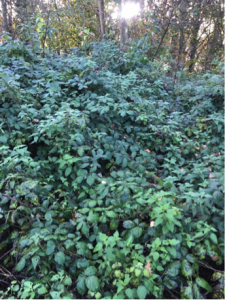
Blackberries are common in our Irish landscape. It is a very strong plant that cannot simply be eradicated and those properties are reflected in the effectiveness of blackberry leaves. It helps the horse in the following:
• increase resistance (because of the vitamin C)
• improve the intestinal flora
• diarrhea or irregular droppings
• inflamed airways
• cleansing and detoxifying the blood
How much and how long?
Pick a handful of blackberry leaves for a few days or weeks or let your horse eat them themselves, after all, a horse is a collector.
Did you know?
Did you know that blackberry can also help with nutrition-related diseases, such as insulin resistance, laminitis, and Monday sickness ( tying-up )? You must of course first adjust the horse 's feed management , otherwise it will not work.
2. Nettle leaf
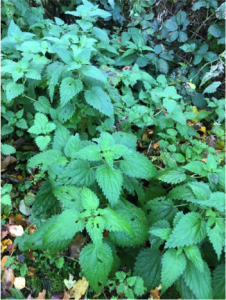
Everyone knows that you have to be carefully when picking nettles. So put gloves on, otherwise you will be stung by the nettles. Its not nice, but once harvested you have something!
Nettle helps with:
• maintains good resistance and has a strengthening effect
• the maintenance of healthy digestion and intestinal flora
• maintaining good blood circulation and elimination of waste products
• proper functioning of the kidneys and liver
• osteoarthritis (joint problems) deformity and decalcification
• detoxify, cleanse and purify
• muscle cramps, laminitis / Monday sickness
• laminitis
• insulin resistance (EMS)
The number of active ingredients in nettle are numerous, such as vitamins A, C, D and K. It is rich in minerals and contains calcium, potassium, magnesium, copper, silicon and iron. Nettle contains histamine that helps horses with pollen allergy, but also formic acid, so you should not use it for longer than 6 weeks in a row and a maximum of a handful (bunch) per day.
3. Yarrow
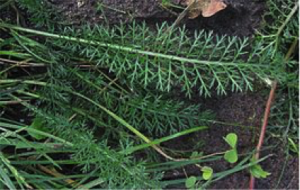
Yarrow has properties that are very similar to those of chamomile and is a hardy plant. Should the horse suffer from digestive issues, such as diarrhea or cramps, or the respiratory tract, such as coughing or a flu, yarrow can help.
With caution!
When giving herbs, however healthy, caution is advised, because herbs are not necessarily harmless! Be careful when picking! for example, yarrow causes a skin reaction. It is also advisable to use this herb for less than a month and in small quantities (5 to 20 grams).
Did you know?
Did you know that there are quite a few herbs that you should not use with pregnant mares? These herbs can cause complications and yarrow is one of them!
4. Dandelion leaf
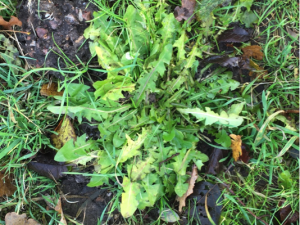
The yellow flowers that transform into seed bulbs have disappeared, but the leaves of the dandelion are still abundantly present. You can really find dandelion everywhere. In meadows, roadsides, gardens, between paving stones, in the countryside and in the city.
Dandelion leaf is a true mineral bomb, but it also contains vitamins B, C and E. The herb helps with the following:
• deacidification (think of too acidic horse droppings)
• the coat (shine)
• the functioning of the kidneys and liver
• detoxify the body
• diuretic
• against stomach and intestinal complaints
• in case of vitamin deficiency
• insulin resistance (EMS)
• parasympathetic stimulant
Is Using Herbs Always Good?
These are by no means all supported effects that this herb has, but here too the use of it is not always good. If a horse has stomach ulcers, it is advisable not to give it because of certain ingredients in dandelion that have an undesirable effect on it, as well as with the use of certain antibiotics it can counteract.
How to use it?
Giving a handfull for a few days or weeks is sufficient. Due to the detoxifying power of dandelion, the herb can also be “too much” for a horse. If you notice any negative changes, stop immediately and use a milder herb.
5. Rose hips
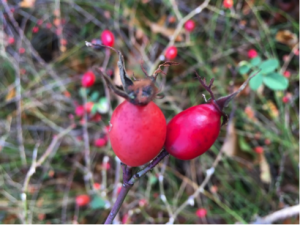
The rose hip bushes have stripped of their leaves and the red / orange rose hips are now ready to be picked. Which is just as convenient, because rose hips are little vitamin bombs for our horses! They are high in vitamin C and also A, B1, B2, E and K.
Rose hips support, among other things:
• the recovery from a cold
• strengthen the immune system
• expelling of urine
• bone growth
• joint complaints
The ultimate horse treat! ( buy online here )
Rose hips are ideal as healthy horse treats and you can give 10 per day for a long time. If your horse likes the bitter taste, he'll love them, those with a sweet tooth don't like them so much.
6. Narrow and tall plantain
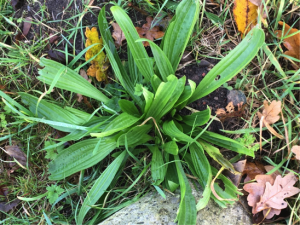
You have the narrow and the large plantain and they are very similar, only the large plantain has an almost round leaf and the narrow one an elongated leaf. You can still see the narrow plantain everywhere (photo) and it is a very useful herb.
Support for your horse
Plantain supports respiratory infections and the recovery of the lungs. Unlike dandelion, plantain does help with inflammation and ulcers in the stomach (wall) and intestines and digestion in general. It also has a good effect on the kidneys and urinary tract. A healthy horse has a better resistance and will therefore be less prone to diseases.
Plantain contains many types of minerals, especially potassium and zinc, but also vitamins C and K and is one of the safest herbs you can give. But with all herbs, excess is harmful!
7. Willow bark
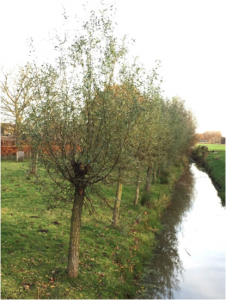
A willow is of course not a herb (plant) at all, but a tree (and sometimes a shrub). Nevertheless, I would like to mention willow for his good qualities. The willow tree is nature's aspirin because it contains salicylic acid and is actually a miracle tree because of all the properties it has to help with the following:
• resistance increasing and strengthening
• calming for stress and tension
• with colic
• cleansing and detoxifying the blood
• supporting the kidneys
• in inflammation and it has an analgesic effect
• in case of acidification, stiffness and cramping
Food-related diseases
Just like the blackberry and nettle, the willow provides support for insulin resistance, laminitis, (EMS) and Monday sickness. These are all illnesses, most of which originated from improper nutrition. By giving our horses appropriate nutrition, you can prevent many of these diseases.
Pruning The willow
Horses like the bark of 1 to 3 year old medium sized branches of the willow to nibble on. A willow can be pruned in the period from November to March, so if you neatly cut some branches from the trunk with pruning shears, you will not burden the tree with that.
More info…
In this blog I talked about freshly picked leaves and branches. If you give a dried herb or a herb mix, use a maximum of 10 to 25 grams per day (total depending on the height of your pony or horse). More information about (dried) herbs and the use of herb mixes can be found on my website . You can use herbs not only if there are already problems, but also preventive.
Have fun collecting these plants, you probably never look "normally" at a roadside or meadow again ;)
Source: HorseComplete and Large Handbook of Medicinal Plants by Geert Verhelst
Translated by The Horse Therapist, member of HorseComplete
